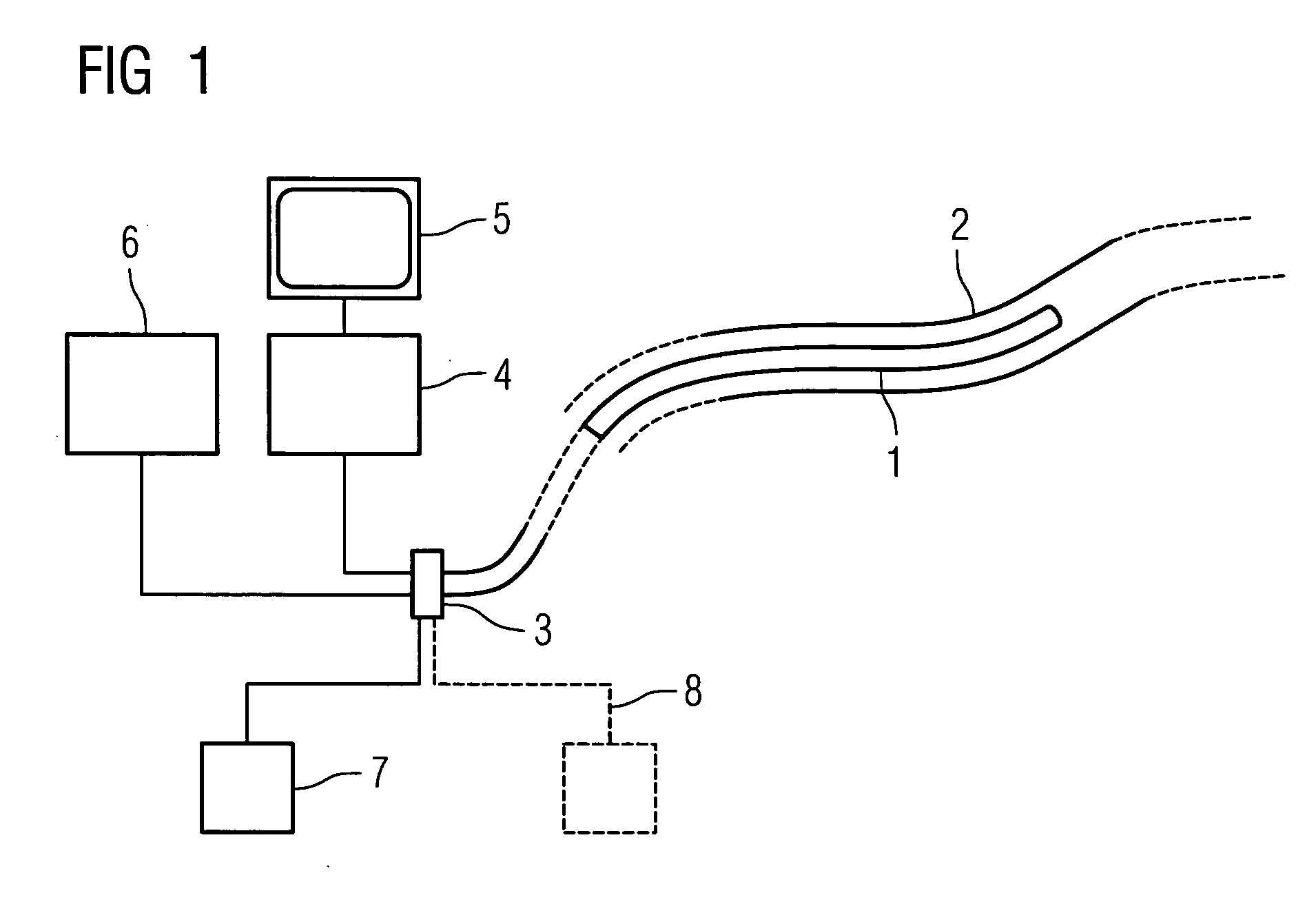Catheter for inserting into a vessel
a catheter and catheter technology, applied in the field of catheters for insertion into vessels, can solve the problems of multiple invasions, limited ultrasound images, and high cost, and achieve the effect of simple catheter captur
- Summary
- Abstract
- Description
- Claims
- Application Information
AI Technical Summary
Benefits of technology
Problems solved by technology
Method used
Image
Examples
Embodiment Construction
[0022]FIG. 1 shows an outline diagram of a catheter1 according to the invention inserted into a vessel 2. The end of the catheter 1 that is not inserted is connected via an interface device 3 on the one hand to a control and processing device 4 as part of the OCT imaging system. Inside the catheter is an OCT imaging device comprising an optical waveguide, which will be examined in more detail below. Light is supplied via the control and processing device 4 to the integrated optical waveguide and light coming from the optical waveguide is captured and processed, to generate high-resolution OCT images, which are output to a monitor 5.
[0023] Also connected to the interface device 3 is a pump 6, by means of which a balloon provided at the catheter tip, which is used both for dilatation and for widening and positioning the stent, can be inflated.
[0024] Also connected to the interface device 3 is a fluid pump 7, via which rinsing fluid or a contrast agent are fed into the catheter and c...
PUM
 Login to View More
Login to View More Abstract
Description
Claims
Application Information
 Login to View More
Login to View More - R&D
- Intellectual Property
- Life Sciences
- Materials
- Tech Scout
- Unparalleled Data Quality
- Higher Quality Content
- 60% Fewer Hallucinations
Browse by: Latest US Patents, China's latest patents, Technical Efficacy Thesaurus, Application Domain, Technology Topic, Popular Technical Reports.
© 2025 PatSnap. All rights reserved.Legal|Privacy policy|Modern Slavery Act Transparency Statement|Sitemap|About US| Contact US: help@patsnap.com



